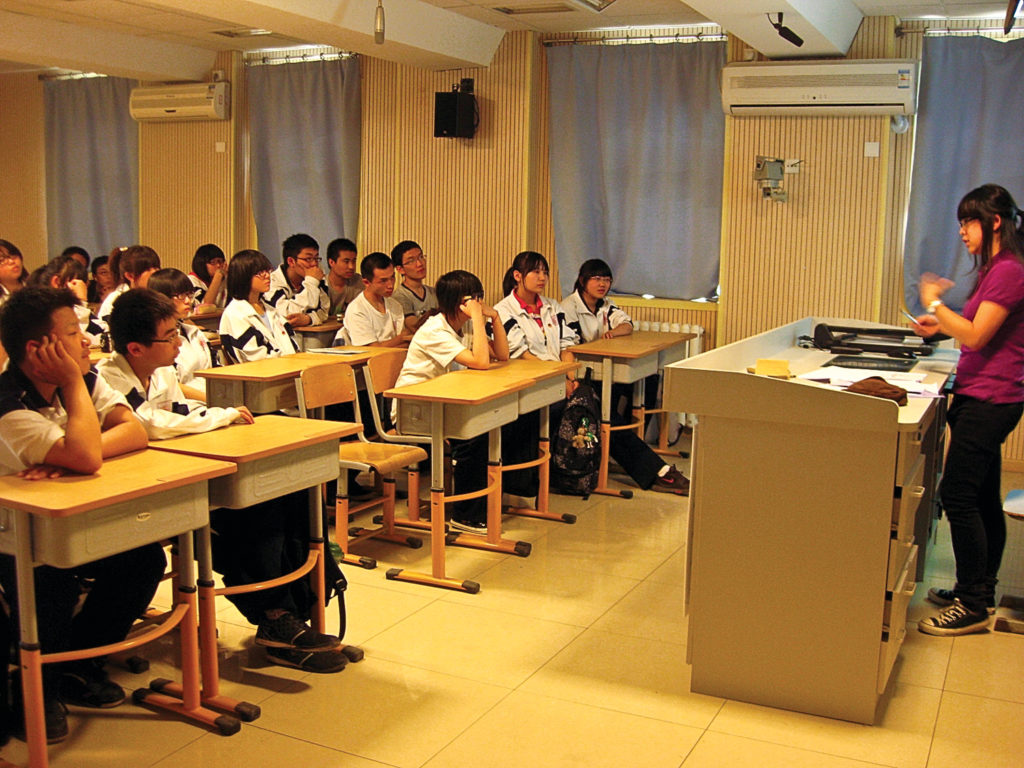International business student, Kexin Li, teaches and learns about the environmental issues plaguing China
Palesa Payne
Contributor

In the summer of 2011, Schulich international business student and Hong Kong native, Kexin Li, began a journey that would result in her gaining a new appreciation for her old country. Li went to Beijing, for an internship with AIESEC, an organization that emphasizes the use of sustainable energy in China.
Having left Hong Kong to come to Canada at age 14, Li was no stranger to China or Chinese culture; she considers Cantonese her mother tongue, but she does speak conversational Mandarin. Despite that, she was admittedly unfamiliar with what mainland China had to offer. Li was not immune to culture shock; having posited mainland China as less tech savvy than her Hong Kong home, she was surprised at how technologically advanced China’s capital city had become.
The view of the city was also something different from Toronto: the skyline is perforated by a myriad of clustered buildings and on the ground there is a tapestry of modern and traditional architecture. In contrast, outside the city there are mountains adorned with an array of vegetation.
One would expect such variety in a city that houses 20 million people—more than half the population of Canada in an area two-thousandths the size. While the large and varied population has its upside as far as social life is concerned, Li was not blind to the pitfalls of trying to accommodate so many people.
While services were streamlined, waiting times could be excessive. The chaos of being packed like sardines into a train car during rush hour in Beijing was enough to put Li off public transit at peak hours, and tackling traffic, even as a pedestrian, was a life threatening affair.
“The traffic was crazy […] traffic lights don’t seem to have a function,” says Li. “It’s a big challenge to cross the road.”
The overpopulation is what brought Li to China in the first place. Li’s internship involved teaching local high school students to write grant proposals to support ecologically responsible practises. The students were part of a nationwide competition that culminated in the winning proposal being sponsored by cosmetics manufacturer L’Oréal.
AIESEC also trained Li with regard to teaching sustainability, and part of her internship was spent bringing environmentally conscious practises to the students.
“[The program organizers] provided us with power points on different topics like water, recycling, environmental footprints, […] and other environmental topics that can help prepare the students who write the proposals to go into a competition,” she says.”
Li noted that while she was able to instruct the students about sustainable practices, they were relatively adept when it came to the task of grant writing. However, Li was responsible for much of the translating as proposals had to be submitted in English.
When asked about her reception as a Canadian university student coming to teach Chinese students about sustainability, Li says she was well received. The students were open to outsiders as they were interested in life in other countries, and she generally felt as though her training and tutelage were appreciated, as was the idea of green technology. Especially in recent times, China as a whole, but particularly Beijing, has been forced to deal with issues of alternative energy sources and sustainability.
Li believes that much of the (growing) consciousness regarding development and sustainability in China is a result of the Beijing-hosted 2008 Summer Olympics. In preparation for the event, Beijing had to reevaluate their use of resources and implement more sustainable practises.
Development has been a serious driving force in China. More people have moved into the major cities of the north, abandoning rural parts of China’s south, making the cities even more populated.
Water shortages are also a serious problem, causing the government to implement a “South-to-North Water project” that would bring water from China’s Yangtze River in the South to the Yellow River in the heavily populated North via a series of large aqueducts.
If water shortages and smog were not enough; sand, dirt, and dust also contribute to the pollution. As recently as the 1950s, sandstorms would envelop the capital city roughly every seven years. These storms have now become an annual event.
Li remembers her pupils’ proposals for sustainable works initiatives that would thwart the current drain on the ecosystem due to overpopulation.
“One of the ideas was to have a building where every area of energy source can be used to collect alternative energy,” says Li. “[The idea was to use] solar panels, collect rain water, […] and use geothermal [energy] to heat the [buildings].”
Naturally, it would be too simplistic to assume that issues surrounding China’s environmental degradation can be solved by a few well-timed initiatives. Beijing’s sandstorms are largely a product of its location. The capital city is located in a basin and is subjected to the dusty winds that come off the planes of Mongolia. China has also been subjected to a storm of foreign industries that continue to bring some seriously ecologically unfriendly business practices to the People’s Republic in hopes of avoiding responsibility and cost associated with business practices in their home countries.
Being a third-year business student, Li expressed that the “triple bottom line” must be taken into consideration. As a no-year business student, I asked her to explain the triple bottom line ideology. She went on to say that businesses must consider the “social, economic, and environmental” implications of their business practices, and that the current business climate puts value on sustainability.
The issue between businesses and eco-friendly practises is still ongoing, but pressure from the middle class in China to fix the problem is growing. According to Charles McElwee, author of Environmental Law in China: Mitigating Risk and Ensuring Compliance, leadership
attention is being focused on helping China’s businesses work efficiently with less of an impact on the environment. In addition, environmental laws in China have grown stronger in the last few years and new environmental rules are being implemented every day. Internships like Li’s acknowledge the global impact of sustainable political/business practices, and hope to assist in bringing China one step closer to their goal: a better environment.
The two months Li spent in Beijing whetted her appetite for studying abroad in general. Winter of 2012 will mark the beginning of Li’s next international exchange: a half-year stay in Holland.
“I was given a chance to meet a lot more people,” she says. “It made me more curious about stuff like going and making established connections with people.”



